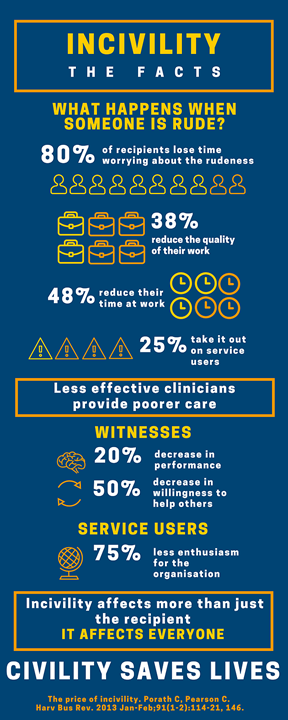Good practice culture - great job satisfaction
This is article five in an RCVS Knowledge series of features on patient safety, clinical human factors, and the principles and associated themes of Quality Improvement (QI).
I have been a veterinary nurse for 21 years and feel privileged to say that I love it!
Ok, so not every day, but overall, it’s been amazing. Occasionally I ponder what makes my job so special – after all, only a few of my friends have stayed in the career they embarked upon after finishing full-time education, and a high percentage of those who have claimed to hate their jobs. Reflecting on some of the places I have worked, the Animal Health Trust (AHT) stands head and shoulders above the rest. Losing the AHT was like losing a dear friend, but why?
What makes you love your job and what makes a good workplace?
During a recent chat with a friend, I asked why she loved where she works. Smiling, she answered, “They have my back, I feel safe”. We both agreed job satisfaction is largely about the culture of a workplace; teamwork; support and inspiration to achieve your personal goals; the ability to feel confident that, with the right work ethos, you don’t need to watch your back; and being able to speak freely and voice concerns within an infrastructure that supports a just culture, which promotes civility and encourages mastery of skills.
Skills for Care1 defines workplace culture as ‘the character and personality of an organisation. It's made up of the organisation's leadership, values, traditions and beliefs, and the behaviours and attitudes of the people in it.’
Culture is subdivided into organisational and employee culture
Organisational culture is how a practice treats its clients, patients, and each other. The foundation of veterinary practice culture is likely to be excellent veterinary care, but to do this, many businesses have realised that making their staff a priority is key. A happy work environment is likely to lead to lower staff turnover, improve teamwork, raise morale, and increase productivity and efficiency2. The most successful organisational cultures are led from the top – time should be taken to identify the key cultural values, behaviours and goals within a practice. These should be communicated, promoted and embedded into all departments including, and especially, the recruitment process, to ensure that new staff are like-minded, and open to learning and improvement.
A zero-tolerance policy should be adopted when dealing with actions which conflict with key cultural values such as discrimination, inequality, bullying and harassment. Unmanageable workloads, poor management and leadership processes should be swiftly addressed, with team members feeling empowered to raise concerns as they arise, while trusting that those who will address the issues will have their best interests at heart.
Employee culture: Having recruited employees that are open to learning and improvement it is important to welcome them and provide them with mentors who foster good culture. We have all heard that ‘teamwork makes the dreamwork’ but within any complex healthcare setting, it is civility that saves lives.
‘Civil work environments matter because they reduce errors, reduce stress and foster excellence’
‘Almost all excellence in healthcare is dependent on teams, and teams work best when all members feel safe and have a voice’
‘Incivility robs teams of their potential’
‘Incivility has been shown to reduce team functioning, clinical decision making and patient outcomes’3
On investigation, the facts speak for themselves- see the figure, 'Incivility - the facts' below.3

Good practice culture benefits everyone
In the busy world we find ourselves in, it can sometimes be difficult to prioritise the things we cannot see; like practice and employee culture. The rewards of implementing quality improvement speak for themselves though and good practice culture really does equal great job satisfaction.
Checklist: what you can do next to create a practice dedicated towards improvement
- Visit RCVS Knowledge’s Quality Improvement hub to start taking advantage of our free templates, courses and resources (over 20 hours of free CPD)
- Take a strategic approach to supporting QI in your area of work
- Read the BVA Policy Position on Good Veterinary Workplaces
- Check out the other resources at www.civilitysaveslives.com
- Listen to Shobhan Thakore’s podcast on Getting your team on board to deliver quality improvement
- Passionate about QI? Why not submit an application to win an RCVS Knowledge Champion Award
References
1An introduction to workplace culture: What is it and why is it important? [Skills for Care] [online]. Available from: https://www.skillsforcare.org.uk/Documents/Leadership-and-management/Workplace-culture/An-introduction-to-workplace-culture.pdf [Accessed 20 January 2021]
2BVA policy position on good veterinary workplaces [BVA] [online]. Available from: https://www.bva.co.uk/media/3708/bva-position-on-good-veterinary-workplaces.pdf [Accessed 20 January 2021]
3Incivility: The facts [Civility Saves Lives] [online]. Available from: https://www.civilitysaveslives.com/infographics?lightbox=dataItem-j9wmt66l [Accessed 20 January 2021]
About the author
 Helen Silver-MacMahon PGDip PS&CHF, Cert VNECC, Dip AVN(Surg), Cert SAN, RVN
Helen Silver-MacMahon PGDip PS&CHF, Cert VNECC, Dip AVN(Surg), Cert SAN, RVN
Helen is an RCVS Knowledge Champion for her role in the sustained training and use of a surgical safety checklist within the small animal theatre at the former Animal Health Trust.
In 2018, Helen began an MSc in Patient Safety and Clinical Human Factors at the University of Edinburgh. The programme supports healthcare professionals in using evidence-based tools and techniques to improve the reliability and safety of healthcare systems.
It includes how good teamwork influences patient outcomes, key concepts around learning from adverse events and teaching safety, understanding the speciality of clinical human factors, as well as the concept of implementing, observing and measuring change, monitoring for safety, and it focusses on quality improvement research and methodologies.
February 2021